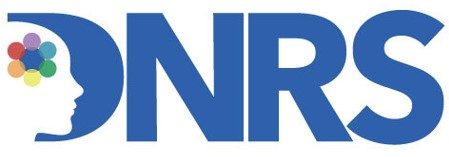Breakdown to Breakthrough: How Author Tom Rosshirt Recovered from Mold Illness, Food Sensitivity, Depression and more
Real Recovery in Episode 1 of Inspired and Rewired
The premiere episode of the video interview and podcast series, Inspired and Rewired launched with an insightful conversation between Dynamic Neural Training System founder, Annie Hopper, and her guest, Tom Rosshirt, who shares his story of transformation using the DNRS program. A former White House speech‑writer, Tom’s memoir Chasing Peace describes his journey from breakdown to sustained healing through DNRS. He highlights how shifting his brain’s associations—especially about safety and threat—enabled him to rebuild health and purpose.His progress underscores the potential of neuroplastic healing: a gradual but powerful path to restoring balance.
Annie kickstarts the conversation by sharing her inspiration behind DNRS—grounded in personal experience. Exposed to mold and toxic chemicals in her office around 2008 in Kelowna, BC, Annie began to develop debilitating symptoms: severe chemical sensitivities, fibromyalgia‑like pain, and electromagnetic hypersensitivity. Over time, she realized that both traditional and alternative treatments were not helping her get well. Something else was in play.
Her breakthrough came during an exploration of neuroplasticity and limbic system dynamics—systems that regulate the brain’s stress and threat response. Annie recognized her brain was stuck in chronic fight‑or‑flight mode, misclassifying safe stimuli as threats. That realization led to DNRS: a program designed to retrain the limbic system
How It Works: The IMAGINE Framework
DNRS centers on a core neuroplastic strategy summed up with IMAGINE:
- Intentions: Shift focus from symptoms to consistent brain-retraining exercises.
- Motivation: Commit as an active participant in healing—daily practice for months.
- Awareness & Association: Identify protective brain patterns; reassign meanings away from fear.
- Gains: Track small improvements to counteract your brain’s doom bias.
- Incremental Training: Use mild exposures to retrain and desensitize pathways.
- Neuroplastic Principles: Strengthen new circuits through repetition
- Environmental Awareness: Acknowledging how our environment impacts overall health
These components together build a structure for physical, emotional and physiological recovery.
Conditions Affected & Scientific Support
DNRS works by targeting brain function that conventional treatments often overlook—making it effective for many hard-to-treat conditions like:
- Chronic Fatigue Syndrome
- Chronic Lyme Disease
- Electro Magnetic Hypersensitivity
- Food Sensitivities
- Fibromyalgia
- Mast Cell Activation Syndrome
- Mold Illness
- Multiple Chemical Sensitivity
- Long‑haul COVID
- POTS
And more
Why It Matters
A beacon of hope for those whose symptoms remain unchanged despite medical interventions, DNRS offers a path toward lasting healing by addressing why the threat circuits in the limbic system remain triggered–and how to reverse it.The science is rising, and so is the community of people finding relief where nothing else has previously worked. (link to Success Stories)
Final Thoughts
Inspired & Rewired with DNRS – Episode 1 is not just a conversation—it’s a case study in how understanding the brain’s hidden wiring can change everything. Annie’s story and Tom’s recovery show that, when we rewire our neural circuits, we can transform our health and reclaim our lives.
Curious to explore DNRS training further? The tools, stories, and structure are building a movement proving that true healing can start with rewiring and retraining the brain.
Watch the interview:
Download the MP3 here.
Listen on Spotify.
To learn more about the science behind DNRS, click here.

